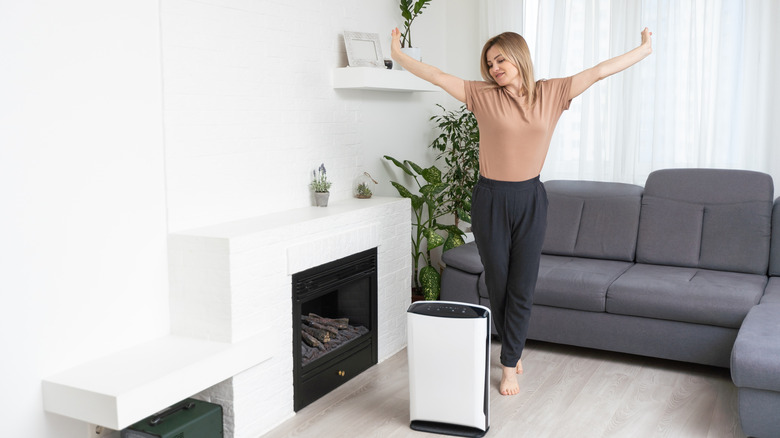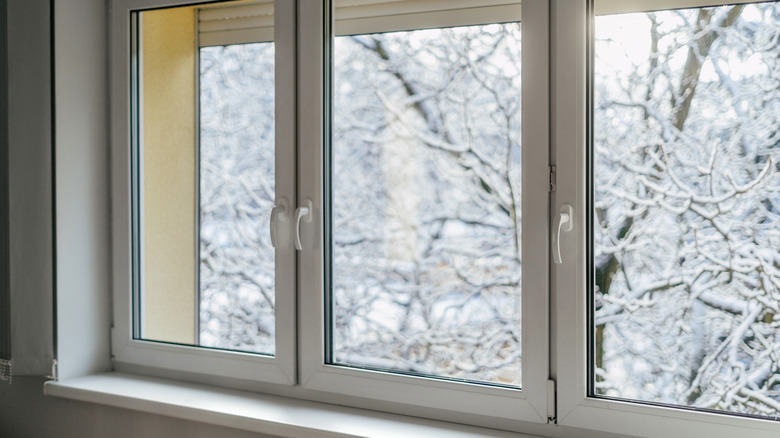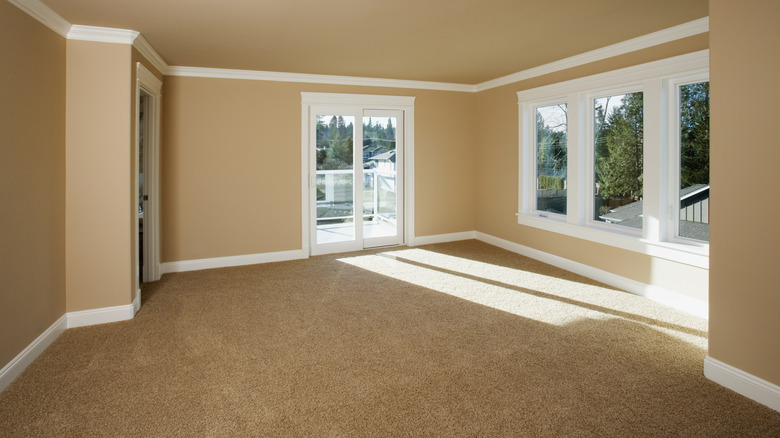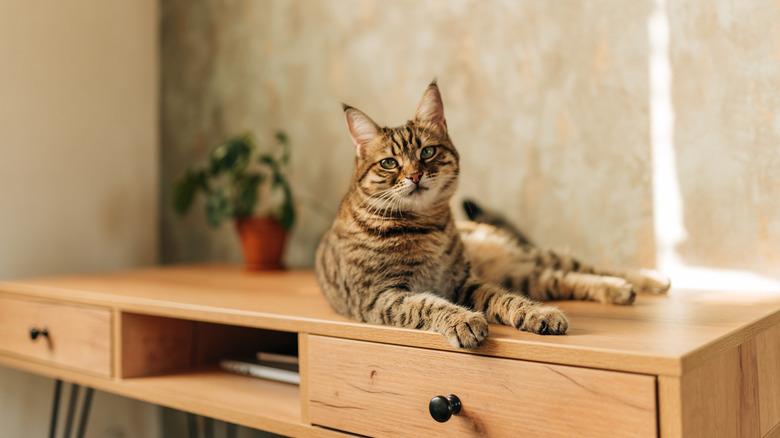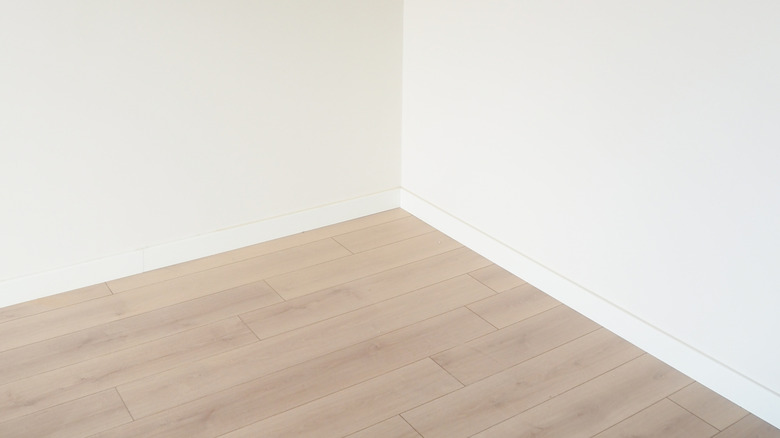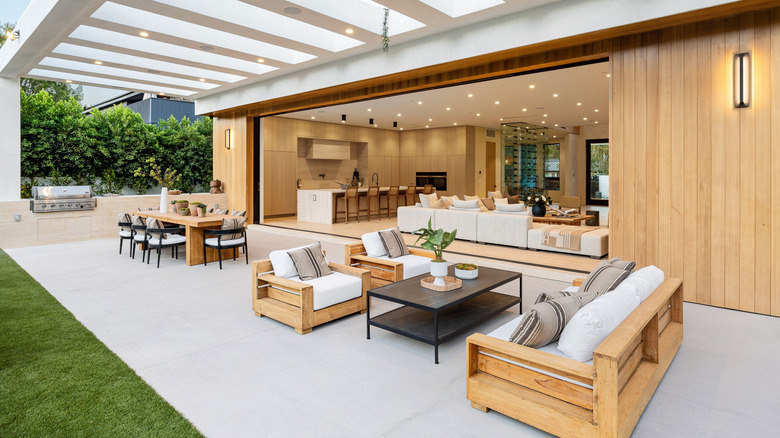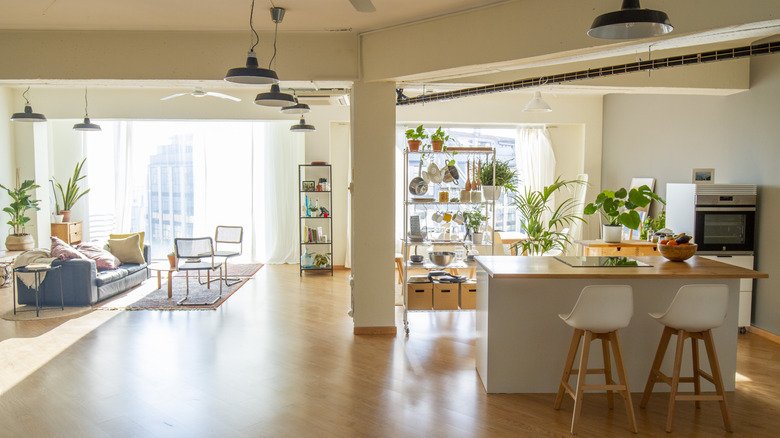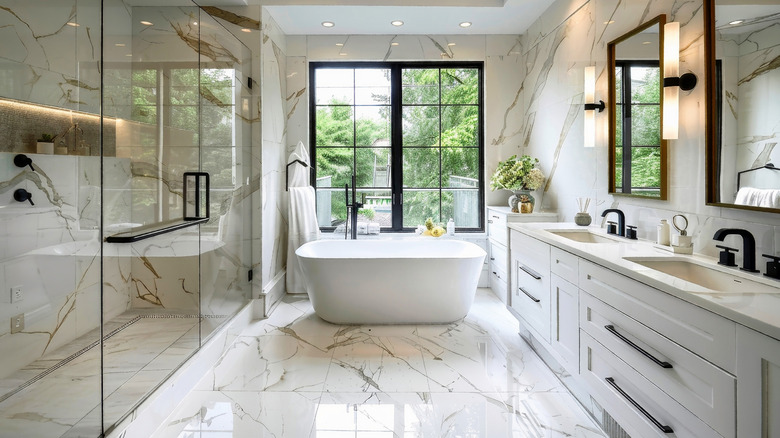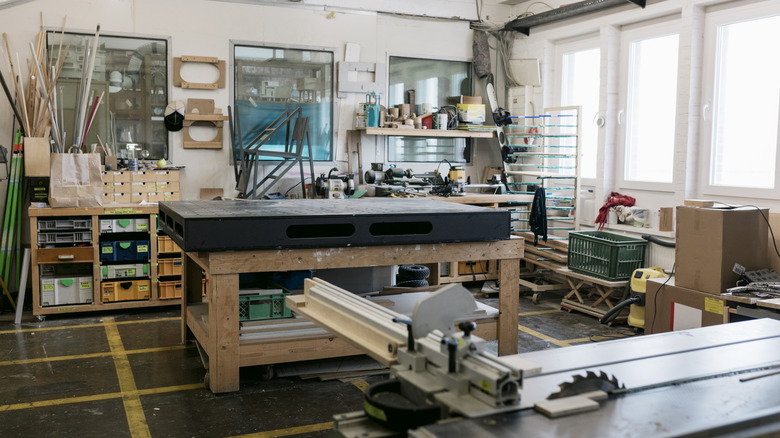The Worst Spots You Could Put Your Dehumidifier
We may receive a commission on purchases made from links.
A dehumidifying device is a must-have for homes in humid climates, and there are several surefire signs you should run a dehumidifier in your house. When placed correctly and strategically, they remove moisture from the air and lower humidity, creating a cooler and more pleasant atmosphere. However, if you don't take care of where you place these devices or don't take household factors into account, it could cause more issues than it solves.
Below are 9 places in your home that you shouldn't place a dehumidifier that could lead to potential downsides that no one thinks of. These locations obstruct the machine's ability to operate, potentially damaging the device, create risk around your home, or have other consequences to keep in mind. While the listed locations aren't the best spots to keep standard units, there are workarounds for every instance. Read on to learn about where you shouldn't place humidifiers, what you should replace them with, or other ways to place them to avoid said issues.
Too close to windows and doors during the wintertime
Placing a dehumidifier beside doors and windows may seem smart, as these are common places where outdoor air and humidity seep into your home. At any time of year, putting a dehumidifier right next to a door creates the danger of it accidentally getting knocked over or tripped over. But, in winter, another glaring issue arises. This device attracts and gathers moisture from the air, and fills with water. When temperatures dip below freezing, the cold water inside could potentially freeze, expand, and damage the dehumidifier from the inside out.
Avoid this potential issue by powering off your dehumidifier during the winter, as it's often unnecessary in dry winter weather anyway. If humidity in your home remains high in winter due to other factors, keep the device far away from doors, windows, and unheated rooms. You can also opt for a dehumidifier that uses desiccants, which absorb moisture rather than condense it, making it safe to operate in colder weather. Dehumidifiers with desiccant rotors, such as the Ivation 13-Pint Small-Area Desiccant Dehumidifier, work in rooms as low as 33 degrees Fahrenheit and don't rely on refrigeration coils that lead to condesnation, making them operable in far more extreme temperatures.
On top of area rugs and carpeted floors
Many dehumidifiers don't have any special instructions saying they can't be used on carpet. This is the type of thing others learn from personal experience. Many dehumidifiers are efficient on soft and hard floors alike. The difference is that cleaning up is a bigger hassle if they accidentally spill or leak on a carpeted surface. It may be harder to recognize a leak as it gets absorbed into your carpet fibers, creating hidden puddles that can develop mold spores in as little as 24 to 48 hours. It's more tedious to soak up water from a carpet or squeeze water out of a rug and hang it to dry than to wipe up spills on hard tile, wood, stone, or synthetic floors.
Avoid this unfortunate circumstance by standing your dehumidifier on hard floors whenever possible. Also, be proactive in preventing leaks from occurring in the first place. Ensure a water tank is snapped into proper place every time it's emptied or cleaned out. Occasionally inspect the drainage hose for blockages, and replace the air filter every one to three months if it's disposable. Make sure the device is level on a surface and not tilted slightly to one side so water doesn't drip off course.
On counters or in pantries beside corked bottles
Anyone who's prepared and cooked food in a humid climate knows how quickly such sweltering conditions in the kitchen can become unbearable. Before setting up a dehumidifier beside a food prep space, be wary about nearby items. Olive oil, wine, dried grains, and other ingredients kept in traditional glass bottles with corks could be damaged by a powerful dehumidifier. On low humidity settings, these machines can dehydrate the wood-based stoppers. When corks dry out, they change size and shape, potentially letting oxygen inside and causing ingredients to expire or evaporate. This is especially damaging to high-end wine, which is often preserved in traditional corked bottles. It can decrease both the quality and value of the wine.
The easy way to avoid this circumstance is to ensure a dehumidifier is set up away from pantries or food and wine storage areas. The good news is that you have nothing to worry about if you don't have any ingredients or bottles with traditional corks. In the case that you do use these storage receptacles, find other ways to make cooking areas more comfortable. Try a convertible range hood or other ventilation methods, such as opening windows and turning on exhaust fans connected to kitchen appliances.
On the floor or on furniture that's reachable by curious pets
Dehumidifiers are generally safe to operate around animals, especially if you're tactful with your chosen model and placement. More lightweight floor devices can get knocked over by large dogs, and countertop devices can get swiped off tabletops by cats. Wired dehumidifiers are also risky if your pets are privy to chewing on electrical cords.
Keep your dehumidifier and living space more pet-friendly by positioning this device away from common pet routes throughout your home. Don't place it near food or water dishes. Many pets get excited to eat and could accidentally bump into a dehumidifier while en route to a delicious meal. If a device is set up near water bowls, water could get knocked over or splash onto parts of the device that are meant to stay dry. You should also keep larger devices out of popular animal play rooms — the next time your dog gets the "zoomies," you don't need them accidentally ramming into the dehumidifier and knocking water all over the floor and themselves.
Tabletop dehumidifiers are even more vulnerable to accidents. Cats have graceful reputations, but any cat owner can attest that these creatures aren't always agile or on their best behavior. If you have a tabletop dehumidifier, don't place it near your cat's favorite lounging spots. A playful swat from them could send your device tumbling onto the ground, smashing a $50 purchase. Therefore, opt for a heavy-weight dehumidifier that's too large for most cats and small dogs to knock over.
In the corner or against the wall in any room
Most dehumidifier models need to be placed about a foot from any walls, corners, or furniture to ensure they get proper airflow. If walls or objects are obstructing them, it impedes the intake or exhaust vents. This leads to decreased efficiency, as well as the devices needing to work harder and use more electricity — all without maximizing the dehumidifying process.
If you have a smaller home, placing a standard dehumidifier this far away from a wall could turn it into an impractical tripping hazard. If you plan to use it in smaller rooms or spaces filled with clutter, choose an air humidifier designed to work while being up against a wall, such as the MeacoDry Arete® Dehumidifier. This dehumidifier has no problem operating in tight corners and up against walls. In fact, you can purchase additional MeacoDry Arete® Wall Mounting Brackets to deliberately mount this device onto a wall.
In outdoor spaces like balconies, lanais, patios, and porches
Beautiful summer days on a back patio are far less glamorous when humidity rises. You may be tempted to relocate an indoor dehumidifier to an outdoor space, like a balcony, lanai, patio, or porch. A powerful device might work if the space is roofed-in with only one open side and three walls. However, no casual household dehumidifier is powerful enough to effectively combat the outside world with infinite sources of humidity. The machine will work overtimes, using considerable energy and putting significant strain on its inner systems.
Instead of attempting to tackle humidity in this direct, but inefficient manner, make more practical decisions. Set up outdoor seating and dining areas in a well-ventilated area to start. A slight breeze helps offset a humid feeling. You could find a dehumidifier that works great outdoors, but these devices are usually built for commercial or industrial use. Expect to spend around $500 or more for a capable device. An outdoor patio fan can also help keep you cool, even though it does have its limits.
In the center of vast rooms and open floor plans
Large spaces and open floor plans aren't as difficult as outdoor areas, but are still tricky to dehumidify. The more square feet there is to cover, the more powerful a device must be to work efficiently. A small, budget-friendly dehumidifier won't have the power or the water storage to properly reduce moisture in wide rooms with high ceilings.
Make sure to measure the size of your room before investing in a dehumidifier. Fortunately, home improvement stores and popular dehumidifier brands often list these products with recommended room sizes. While browsing online for a dehumidifier for a large space, filter for devices recommended for 1,000 square feet or more. Double-check the capacity before settling on a certain model, ensuring it holds between 45 to 50 pints of water. If your floor plant is exceptionally vast, you may be better off installing one device to efficiently dehumidify your whole house through your HVAC system. These systems run upwards of $1,000, not including installation and labor costs, but can operate more efficiently in large areas.
In bathrooms
A bathroom might seem like an obvious place for a dehumidifier, but this isn't always the case. Although these tools are designed to remove moisture from the air, they aren't water-resistant. Too much moisture on your device can corrode the metal components and connections, causing them to break down prematurely. Plus, we all know the combination of water and electricity is a dangerous one that can lead to electrocution.
Humidity is a common issue in bathrooms, and it needs to be addressed. The most common solution is to install an exhaust fan in the ceiling or wall. As a general rule, you can have an exhaust fan without a dehumidifier, but a dehumidifier itself can not replace the exhaust fan. If you do want to add a dehumidifier to a bathroom setup, it should be used as a supplemental dehumidifying device, not the primary agent. Rely mostly on your exhaust fans to remove moisture from the air. You can also opt for a non-electric dehumidifying option, such as the Vacplus Moisture Absorbers.
In your workshop
Garages, sheds, and other workshop setups often don't have insulation. Without insulation, they're more prone to natural heat and humidity from the outdoors. Like in a kitchen, placing a dehumidifier by a workstation might make conditions more tolerable, but it could put your dehumidifier at risk. Dust and debris are common byproducts of these spaces and can be detrimental to these devices. Small particles clog the coils and grills, ruining their efficiency and inevitably leading to a premature breakdown.
Find other ways to increase ventilation in your workspace. The easy answer is to install an air conditioning unit in this room, since cold air tends to be less humid. Other ways to keep a garage or workspace cool without using AC are to improve ventilation by opening doors and windows and installing ceiling and exhaust fans. That being said, a dehumidifier can be a useful asset as long as you keep it away from your main workspace and ensure it doesn't get covered in a thick coating of dust.
